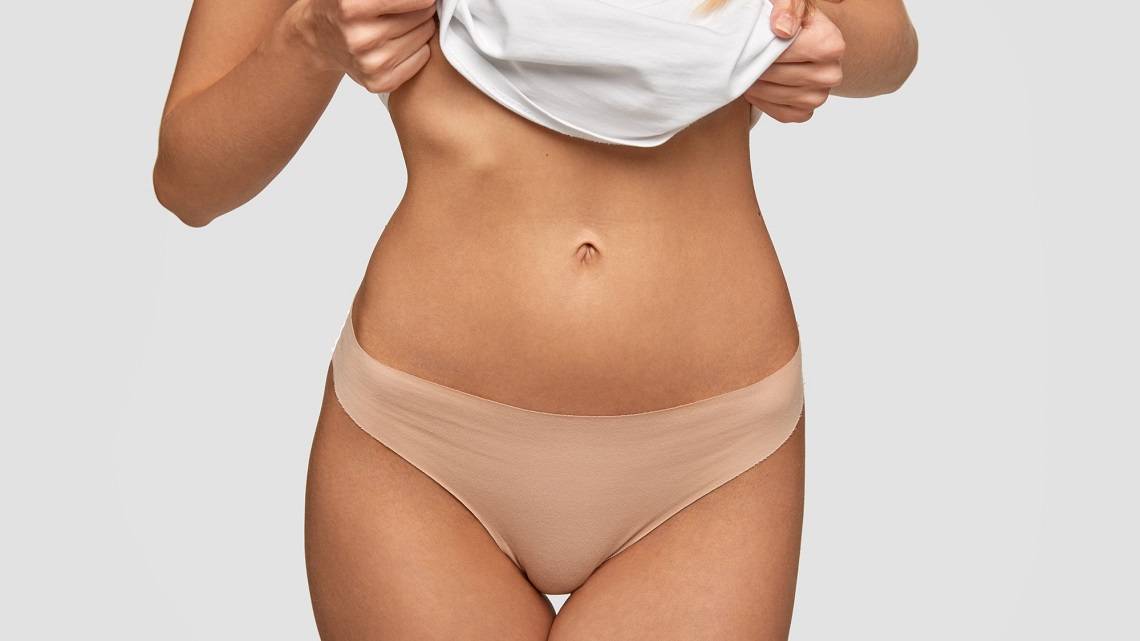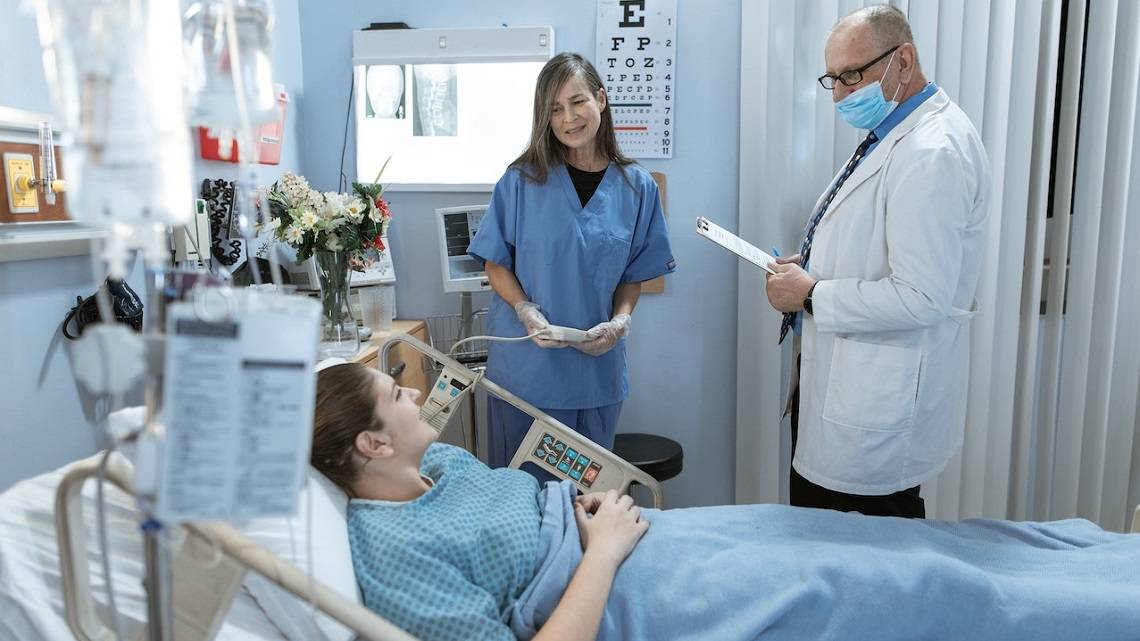What Is A Tummy Tuck
Female and Male Abdominoplasty, or “tummy tuck,” is a procedure used to make the abdomen thinner and firmer. The surgery involves the removal of excess skin and fat from the middle and lower abdomen and the tightening of the muscle and fascia of the abdominal wall. This type of surgery is usually sought by patients with loose or sagging tissues after pregnancy or major weight loss. Several types of Tummy-Tuck surgeries can be performed – (see diagram here). The surgeon will advise you with a personal assessment, which is best for you, based on your personal photos and medical form information. Full, Mini and Extended Tummy tucks, Fleur De Lis Tummy Tuck, and Circumferential lifts are all performed by our surgeons.
A Tummy Tuck is done when:
- Pregnancy has made the muscles lose, excess skin, and stomach skin sag
- Weight loss has created excess skin and made the stomach skin sag
- Hereditary issues cause excess skin
Types of Tummy Tuck Surgery

The type of ‘tuck’ you will require will be determined by your surgeon. Scarring is different for everyone, as not everyone has excess skin in the same places.
FULL TUMMY TUCK
This is the most commonly performed type of tummy tuck surgery. This involves the creation of a hip-to-hip incision, as well as incisions around the belly button. Because they address the patient’s entire abdominal area, they often involve ‘creating’ a new belly button to ensure natural-looking results. Abdominal liposuction is commonly added to this procedure.
MINI TUMMY TUCK
Also called partial abdominoplasties, they are intended for patients who are within 10 percent of their ideal body weight and are content with making alterations only to the part of the abdomen that is below the navel. Mini tummy tucks require only a single small incision. They usually do not involve repositioning the navel. Partial abdominoplasties result in less dramatic changes to the appearance of the abdomen than other types of abdominoplasty surgery, but also offer a shorter recovery time than most tummy tuck procedures.
EXTENDED TUMMY TUCK
Involves the removal of ‘love handles on either side of the waist as well as the removal of fat and excess skin from the stomach area. The incision is usually low so that even if the scar extends behind the hips, it will not be visible, even when one is wearing low-rise clothing. This procedure allows for the treatment of a larger area than the traditional tummy tuck. In order to address the lifting of the entire lower body area, a circumferential tummy tuck is usually required.
CIRCUMFERENTIAL LIFT – BELT LIPECTOMY
The Circumferential Body Lift procedure is performed to correct many of the areas of loose skin after massive weight loss from diet and exercise or from having had weight loss surgery. When a person loses a lot of weight, the skin cannot adequately shrink due to poor tissue elasticity. Skin hangs and droops, creating uneven contours. No amount of exercise or dieting will make the excess skin go away. Surgery is required to remove the excess loose skin, thus improving the shape and tone of the underlying tissue that supports fat and skin.
A circumferential body lift procedure removes a belt of skin, subcutaneous fat and tissue in the abdomen, and skin in the waist and buttock areas, resulting in a smoother, more youthful body contour. These physical changes to the body can improve your body image and enhance your self-confidence. A circumferential incision around the abdominal area, extending around the sides and into the lower back, is used to remove excess skin and fat and reposition and tighten tissues. The result leaves a single scar around the body.
FLEUR DE LIS LIFT
This involves an incision running laterally across the abdomen, from one hip to the other, just above the pubic bone, and this procedure utilizes an additional incision, running vertically down the midsection, to better address the lax abdominal tissue. This is for clients who have very large amounts of excess skin and need more than an Extended Tummy Tuck. If you have experienced significant weight loss, this may be the procedure for you – this will restore a smooth, curvaceous figure as it also addresses the upper abdomen as well.
REVERSE TUMMY TUCK
This procedure involves incisions at the top of the upper abdomen – just near or at the breast crease. This is usually done possibly after a full tummy tuck has been done previously, and you have either lost more weight or you may just have excess skin on the upper abdomen only. See the diagram above. It may also possibly involve tightening of the abdominal muscles.
In our hospitals, these procedures are only performed under general anesthetic. The length of the operation will depend on the extent of the surgery, but the surgeon will advise you of the length of the surgery during your consultation.
What Does The Surgery Involve?
- The surgeon makes a horizontal, curved incision (cut) near the pubic hairline that runs from one hip to the other for a Full Tummy Tuck.
- Extended Tummy Tuck means the incision site will be longer to remove excess skin and avoid ‘Dog Ears’
- Circumferential Lift (Belt Lipectomy) – the incision site is 360 degrees around your body
- Fleur De Lis incision sites are the same as a Full Tummy Tuck but also run vertically down the mid-section to remove excess skin
- Reverse Tummy Tuck – the incision is across the top of the upper abdomen
- The skin and fatty tissue are lifted from the underlying tissue.
- The surgeon will stitch and tighten slack or separate abdominal muscles.
- Excess fat is removed.
- Excess skin is trimmed.
- The navel is repositioned.
- The wounds are closed with stitches, tape, or clips.
Your Questions On Everything Tummy Tuck

Are Tummy Tuck results permanent?
The results of a Tummy Tuck are generally permanent as long as clients don’t experience changes to their body following surgery (e.g. extreme weight gain or pregnancy). To ensure long-lasting results, our Plastic Surgeons ask clients to be physically healthy, not planning a pregnancy in the future, and able to maintain a stable weight. It is best to wait at least 12 months post gastric sleeve surgery to ensure you do not lose more weight and you have been at the same weight for a while.
How painful is a Tummy Tuck?
Most clients experience mild to moderate tightness and soreness for approximately 3-6 weeks post-surgery. It is important to note that everyone’s pain threshold is different, and not all Tummy Tuck procedures involve the same techniques. To be honest, you will be more uncomfortable than in pain, as you won’t be able to lay straight in bed – your knees should be elevated, so you won’t stretch your tummy skin too much. Your Surgeon will discuss the complexity of your unique procedure with you ahead of time and provide personal advice on how best to manage your post-operative discomfort. Pain relief medication can be prescribed as required.
How will I know which tummy procedure is right for me?
Once the surgeon has reviewed your medical form and photos, you will be given a personal assessment which will clearly explain which procedure is right for you.
Does a Tummy Tuck remove fat?
Tummy Tuck surgery removes excess skin and fat from the midsection of the body. To ensure that the maximum amount of excess skin is available for removal, it is crucial that you’re at your goal weight before surgery. This will also help your Plastic Surgeon achieve optimal, long-lasting results. If required, your Tummy Tuck procedure can include standard upper abdomen Liposuction to assist in the removal of stubborn fat and enhance the overall result of your waistline contour transformation.
What will the recovery be like after surgery?
When you wake up after tummy tuck surgery, your abdomen may be very swollen, and it may be throbbing. Don’t wait for the pain to be unbearable before you take your pain medication. Take your pain medication on time because that stops the pain before it gets too bad. You will actually use less pain medication if you take it on time than if you wait for the pain to become severe. And pain interferes with healing. There is absolutely no reason to be tough and suffer through the pain. As the days go on the swelling and pain will dissipate. You may have bruising, but this is normal. Abdominoplasty involves loosening the skin from its previous attachments and re-draping it. That action, along with the incisions, means that some nerves were cut. Sensation will usually come back gradually over the course of several months. Sometimes, the first thing you will feel in areas that are numb, is itchiness or tingling.
How should I sleep and move post-surgery?
Sleep with your head and shoulders elevated for 14-21 days. You will be lying down a lot because you will be sore and will have problems standing upright for at least one month. Sitting may be more comfortable, but it still might be a bit much for you. Sleeping may not be a problem since some pain medications can make you sleepy. Getting up and down from a sitting position or in and out of bed will be difficult and will hurt. Remember, everything will continue to get easier as the days pass. Full recovery after a tummy tuck could be several months.
Do I need to wear a compression garment?
Our surgeons require you to wear a compression garment around your abdomen. You MUST wear this compression garment for a minimum of three months – it is a good idea to purchase two or three garments so you can wash and wear them. This may be in the form of a wide binder that goes around your abdomen or a girdle-like garment that pulls on or zips up the side. Either will compress your abdomen a bit and help in healing and controlling the swelling.
Can I shower after Tummy Tuck surgery?
Not initially. To promote healing, wounds must be kept dry. Clients must stick to sponge baths only in the first few days of recovery. In the hotel, there is a hand shower in the bath as well as the shower, so this will help. Your Surgeon will advise when it is safe for you to resume showering and bathing again.
How long will I have to take off work for a Tummy Tuck?
Most clients require at least 4 weeks to recover; however, each procedure is unique, and clients heal at different rates. In most cases, clients can return to work after 4 weeks and resume driving. Strenuous exercise and activities that place strain on the abdominal area (e.g. sit-ups and sexual intercourse) must be avoided for at least 6 weeks. Your Plastic Surgeon will provide you with personalized advice about your recovery timeline.





